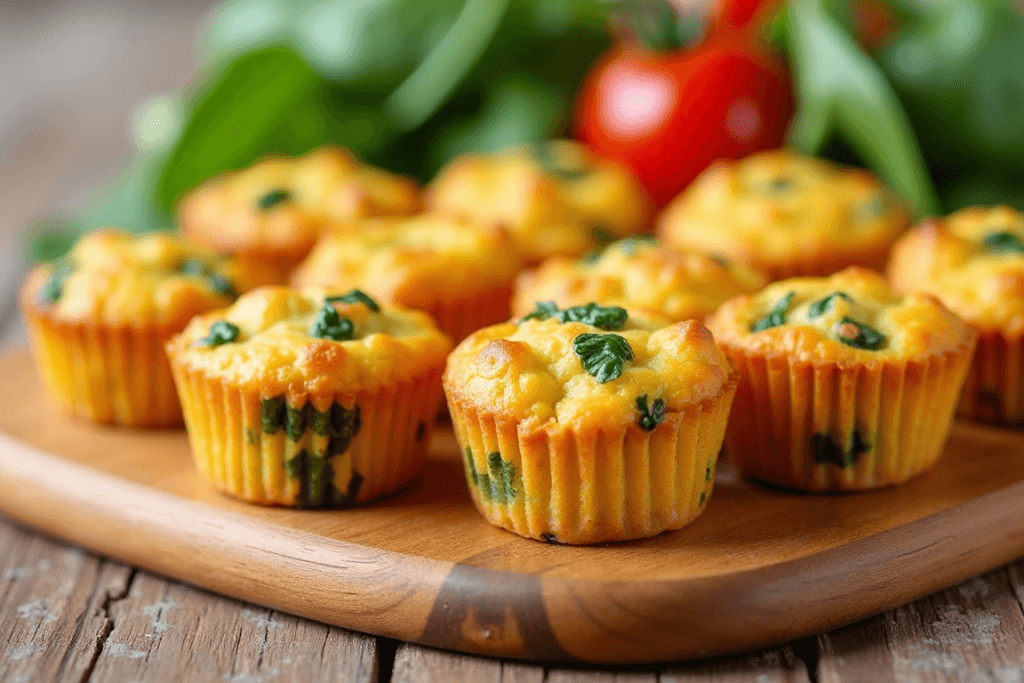Feeding a toddler can feel like solving a puzzle with missing pieces—especially if you’re skipping meat. Whether you’re raising your little one vegetarian or just want to include more plant-based meals, figuring out what to serve for lunch can be a bit tricky. But don’t worry—I’ve got you covered! This guide dives deep into creating delicious, meat-free lunches that your toddler will actually eat. Let’s explore how to keep their meals balanced, tasty, and packed with all the nutrients they need to thrive.
Table of Contents
Understanding Meat-Free Diets for Toddlers
Benefits of a Meat-Free Diet for Toddlers
You might be wondering, “Is cutting meat from my toddler’s diet a good idea?” Well, there are plenty of perks! A meat-free diet can encourage your toddler to try a variety of fruits, veggies, and grains they might not otherwise eat. Plus, it’s often easier on the tummy—plant-based foods are naturally high in fiber, helping with digestion (goodbye, tantrums caused by tummy troubles!). It can also lower the risk of certain health issues like obesity later in life.
For a deeper dive, check out Meatless Lunch Ideas for Toddlers for creative inspiration.

Common Concerns About Removing Meat from a Toddler’s Diet
Of course, it’s natural to have concerns. The biggest worry parents often have is whether their child will get enough protein, iron, and other key nutrients. Luckily, there are loads of alternatives that can fill the gap. And, let’s face it, toddlers can be picky anyway—so why not get creative and make them enjoy new textures and flavors?
Did You Know? Lentils and quinoa are protein powerhouses that can replace meat in many toddler-friendly meals!
Essential Nutrients to Focus On in a Meat-Free Toddler Diet
To ensure your little one stays healthy and happy, you’ll want to pay special attention to a few key nutrients. Here’s the rundown:
| Nutrient | Why It’s Important | Best Sources |
|---|---|---|
| Protein | Helps build muscles and tissues | Beans, lentils, tofu, tempeh, quinoa |
| Iron | Supports brain development | Spinach, fortified cereals, pumpkin seeds |
| Calcium | For strong bones and teeth | Milk, yogurt, fortified plant milks |
| Vitamin B12 | Keeps nerves and blood cells healthy | Fortified cereals, nutritional yeast |
Nutritional Building Blocks for a Balanced Meat-Free Lunch
Protein Sources Without Meat
Let’s tackle the big one: protein. Kids need it for growth, but thankfully, it’s not exclusive to meat. You can sneak in protein through legumes, beans, tofu, and even nut butters. Here’s an easy favorite:
Recipe Idea:Cheesy Lentil Patties
Ingredients: 1 cup cooked lentils, 1 egg, 1/4 cup breadcrumbs, 1/4 cup grated cheese, pinch of salt.
Mix everything, form into small patties, and pan-fry until golden. Serve with ketchup or a yogurt dip.
Importance of Iron and How to Include It
Iron is like the superhero nutrient for toddlers—it fights fatigue and supports brain growth. Without meat, you can turn to leafy greens like spinach, legumes, and fortified cereals. Pro tip: Pair iron-rich foods with vitamin C (like oranges or strawberries) to help absorb it better.
Calcium-Rich Foods for Strong Bones
Your toddler’s bones are growing faster than weeds in the spring! Make sure they get enough calcium. Dairy products like milk and cheese are great options, but if you’re looking for plant-based ideas, fortified almond milk or tofu is a win.
Fiber for Digestive Health
Have you ever seen a toddler meltdown caused by constipation? It’s not fun for anyone. Fiber can save the day! Whole grains, fruits like apples, and vegetables like broccoli keep things moving smoothly (literally).
Healthy Fats for Toddler Growth
Healthy fats are brain food for toddlers. Think avocados, nut butters, and olive oil. A drizzle of olive oil on steamed veggies can make them more appealing—and it’s great for their growing minds!
Simple and Tasty Meat-Free Lunch Ideas for Toddlers
Creative Sandwich Alternatives
Sandwiches are a go-to lunch, but why stick to the usual PB&J? Try hummus and shredded carrots on whole wheat bread or avocado mash with sliced cucumbers. For extra fun, cut the sandwiches into star or heart shapes—kids eat with their eyes first!
Toddler-Friendly Pasta Dishes
Pasta is a parent’s best friend—quick, easy, and versatile. Mix whole-grain pasta with a simple veggie-based marinara or creamy cheese sauce. Toss in finely chopped spinach or peas for a hidden nutrient boost.
Quick Tip: Spiralize zucchini or carrots for a fun veggie pasta alternative!
Veggie-Packed Soups and Stews
Who doesn’t love a warm, comforting bowl of soup? Soups and stews are perfect for packing in loads of veggies while being gentle on little tummies. A creamy broccoli soup or a hearty lentil stew can be a game-changer. Plus, they’re easy to batch-cook and freeze for those busy days when you need something quick.
Recipe Idea:Easy Toddler Veggie Soup
Ingredients: 2 cups chopped mixed veggies (carrots, zucchini, and sweet potatoes), 1 cup vegetable broth, 1/4 cup coconut milk, pinch of salt.
Instructions: Boil the veggies in the broth until soft. Blend until smooth, stir in coconut milk, and serve warm with whole-grain crackers.
Healthy Finger Foods for Picky Eaters
Let’s face it—toddlers can be notoriously picky. But finger foods? Those are always a hit. Think roasted veggie sticks, mini quesadillas filled with cheese and beans, or homemade veggie nuggets. Keep portions small and easy to handle for tiny hands.
Pro Tip: Serve dips like guacamole or yogurt alongside finger foods. Toddlers love to dip!
Quick and Easy Toddler Lunch Bowl Ideas
If you’re short on time but still want a balanced meal, lunch bowls are the way to go. Start with a base like quinoa or brown rice, add some steamed veggies, a dollop of hummus, and a sprinkle of shredded cheese or seeds. These bowls are customizable and perfect for introducing new flavors to your toddler.Check out Healthy Cottage Cheese Flatbread Recipe for a side option.
| Lunch Bowl Ingredients | Quantity |
|---|---|
| Cooked quinoa | 1/2 cup |
| Steamed broccoli | 1/4 cup |
| Chickpeas | 1/4 cup |
| Hummus | 1 tablespoon |
| Shredded cheese | 1 tablespoon |

Tips for Making Meat-Free Lunches Appealing to Toddlers
Using Fun Shapes and Bright Colors
What’s more exciting than eating a star-shaped sandwich or colorful veggie skewers? Toddlers are naturally drawn to bright colors and fun shapes. Invest in some cookie cutters or skewers to jazz up their meals. A plate with rainbow-colored veggies like red peppers, orange carrots, and green cucumbers can also make lunchtime an adventure.
Involving Your Toddler in Meal Prep
Here’s a secret: toddlers are more likely to eat what they help make. It might get a little messy, but letting them sprinkle cheese, mash avocados, or mix ingredients can make them proud of their “masterpiece.” Bonus: it’s a great way to bond!
How to Introduce New Foods Gradually
Introducing new foods to a toddler is like easing into cold water—slow and steady wins the race. Pair unfamiliar foods with something they already love. For example, mix shredded zucchini into their mac and cheese or add a few peas to their favorite rice dish. This approach reduces the “newness” factor and helps them accept new flavors over time.
Solving Common Problems in Meat-Free Toddler Lunches
Handling Picky Eaters: Practical Advice
Got a picky eater? Join the club! Many parents struggle with this, but there’s hope. The key is persistence and patience. If your toddler rejects a food once, don’t give up—try again another day in a different form. For instance, if they won’t eat plain carrots, try roasting them with a drizzle of honey for added sweetness.
Fun Fact: It can take up to 10 tries for a toddler to accept a new food. Stay consistent!
Ensuring Enough Protein in Every Meal
Worried about protein? Don’t be! Meat-free protein options are incredibly versatile. For instance, a peanut butter and banana sandwich on whole-grain bread is a protein-packed lunch that feels more like a treat. You can also sneak tofu or beans into soups and casseroles without them even noticing.
Dealing with Food Allergies and Sensitivities
If your toddler has food allergies, it can feel like an added layer of complexity. The trick is to find alternatives. Allergic to dairy? Go for fortified almond or soy milk. Can’t have nuts? Use sunflower seed butter instead. Keeping a well-stocked pantry of allergy-friendly ingredients ensures you’re always prepared.
Frequently Asked Questions About Meat-Free Lunches for Toddlers
Is a Meat-Free Diet Safe for My Toddler?
Absolutely! A well-planned meat-free diet can provide all the nutrients your toddler needs to grow strong and healthy. The key is variety—offer a range of fruits, vegetables, whole grains, and plant-based proteins. If you’re ever in doubt, consult your pediatrician or a nutritionist for reassurance and guidance tailored to your child’s needs.
Quick Tip: A daily multivitamin can help fill any gaps in your toddler’s diet. Check with your doctor first!
Can a Toddler Get Enough Iron Without Meat?
Yes, they can! Many plant-based foods are rich in iron, such as lentils, chickpeas, spinach, and fortified cereals. Just remember to pair these foods with a source of vitamin C, like a splash of lemon juice or a side of orange slices, to enhance iron absorption. It’s all about creating balanced meals that work together to support your toddler’s growth.
How Do I Encourage My Toddler to Eat More Vegetables?
This might feel like climbing a mountain some days, but it’s not impossible! Start by sneaking veggies into meals they already love. For example, blend spinach into pasta sauce or mix grated zucchini into muffins. Over time, introduce veggies in their natural form alongside dips or sauces to make them more appealing.
Pro Tip: Roasting veggies brings out their natural sweetness, making them more toddler-friendly!
Conclusion: Nourishing Your Toddler With Delicious Meat-Free Options
Feeding your toddler a meat-free lunch can be rewarding when you focus on balanced nutrition, creativity, and consistency. Explore new recipes and keep a positive attitude about introducing healthy foods. For more ideas, revisit Cottage Cheese Recipes to keep mealtime fresh and exciting.
With love and care, you’ll raise a happy, healthy eater who enjoys the wide world of flavors you have to offer. Happy cooking!

